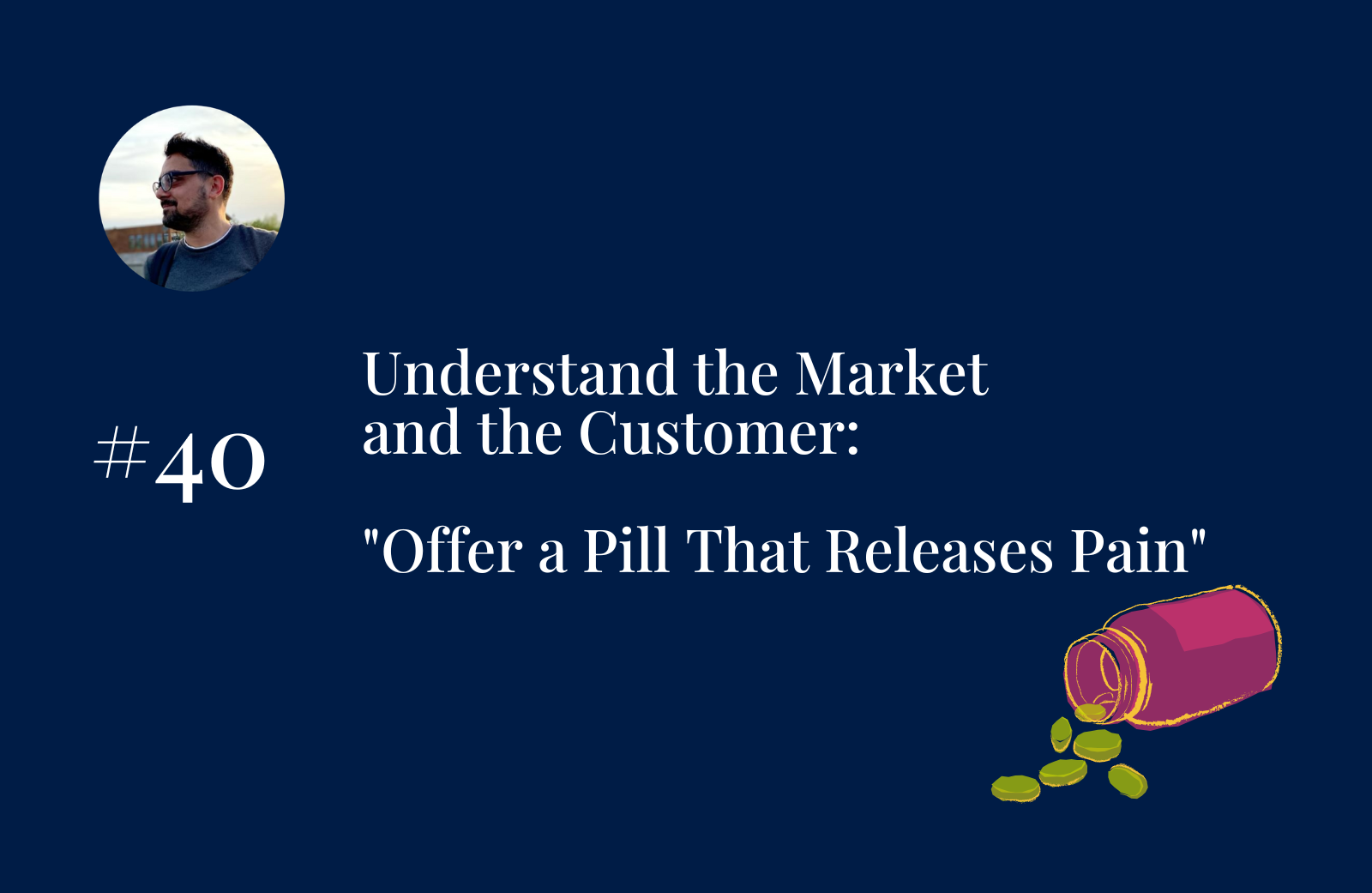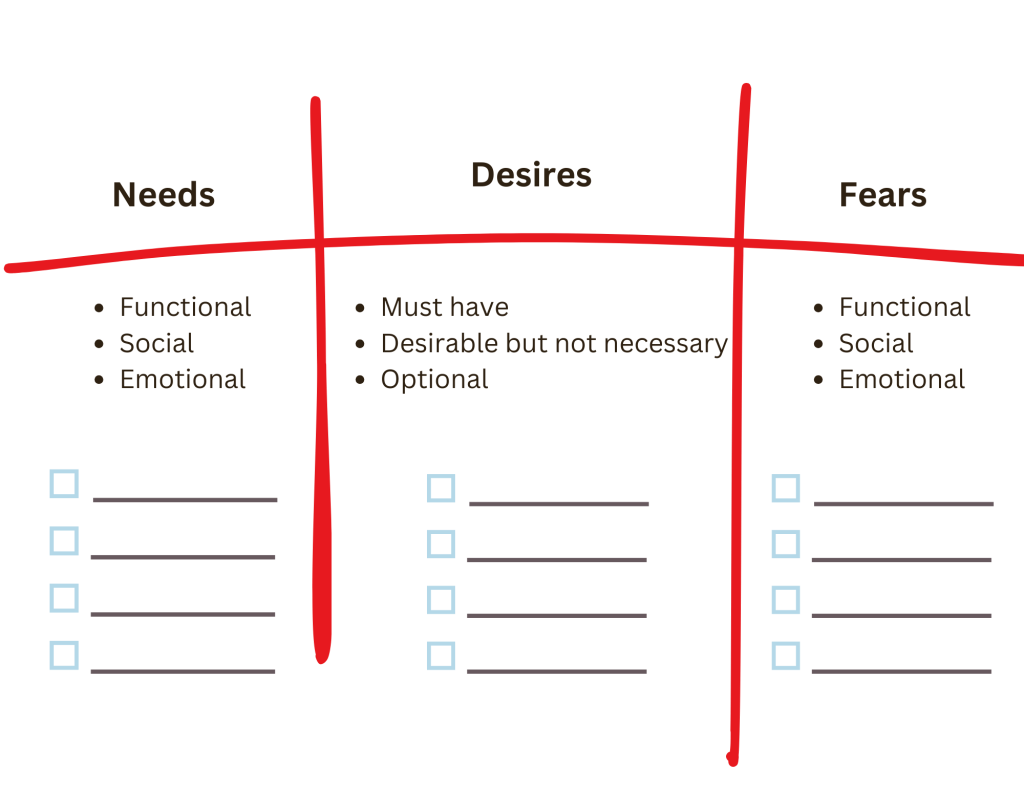
02 Apr Start a Business – Value Proposition Canvas
Apr 2, 2025
Here is a short definition of what the Value Proposition Canvas is:
The Value Proposition Canvas is a tool used to design, test company's proposition in order to better align products or services with the needs and desires of customers.
Simply put, it is a process of evaluating what the customer feels and thinks about our product. Based on this analysis, we can make a list of conclusions regarding what must be changed in our product or service to actually solve the customer’s problem.
The ultimate goal is to adapt. At the end of the day, we want someone to buy what we offer and to generate sustainable positive revenue — right?
In fact, we already conducted a similar analysis in the article “In Customer’s Shoes”. However, today we’re going to dive deeper.
Through Customers’ Eyes
Needs
When customers buy a product or service, they are satisfying certain needs. There are three groups of needs we need to be clear about:
- Functional: These are practical needs our product satisfies. For example, when buying a phone, the practical need is to be able to call family and friends.
- Social: These are social benefits our product provides to the customer. For example, when buying an expensive iPhone, the social need could be a higher social status, like “I earn enough money to afford a high-quality phone.” The last one, by the way, is not quite true, but I give it for the sake of the example.
- Emotional: These are the emotional needs we satisfy for the customer. For example, this could be the feeling of having high value. I own the latest generation MacBook and associate that machine with myself, and therefore, I feel like I have higher value. I feel satisfied and of high worth.
Take a piece of paper and a pen, and write down a list of the functional, social, and emotional benefits your product or service brings to your customer.
In previous articles, we have already conducted customer interviews and put ourselves in the customer’s shoes, which means we have a much clearer idea of who our customer is. That should help you make the list.
Take your time and don’t rush! Making a correct list is crucially important.
Let’s take the example of the phone. If you developed a new phone and you’d like to enter the market, but you are aware of a major hardware bug issue, you will most likely not be able to satisfy some of the customer’s needs. They will quickly discard your phone and buy another one of higher quality.
Therefore, as you can see, understanding what exactly are the customer’s needs will give you a clear understanding of what you have to focus on improving in your product.
Desires
When I visit a store and browse for a product, I usually have a list of requirements in my head. Some of these are important to be satisfied, others are good to have but I can live without them, and others I just don’t care if the product has.
For example, when choosing a frying pan, a must-have quality is the ceramic coating of the pan.
Therefore, the desires (or requirements) of the customers can be split into three groups:
- Must-have: The product must have these features.
- Desirable but not necessary: The product may not have them, but it’s good if it does.
- Optional: I don’t care if the product has these features.
Again, take a piece of paper and a pen and write down all the requirements the customer may have for your product. Split them into three groups: “must-have,” “desirable but not necessary,” and “optional.”
This exercise may look trivial and unnecessary. However, it is important because it will give you clarity about what you actually have to offer to the customer.
For example, it may turn out that the new phone you developed offers twice the battery capacity, which you consider important. However, after interviewing the customer, you find out that this is an optional feature, and the customer cares much more about another feature.
Therefore, this type of analysis may save you from spending money on research and development in areas that will not increase your sales.
Fears
Every time you buy a product, you spend money, right? Money represents the time you have worked to earn it. Therefore, by investing something from yourself, you may have doubts about whether the thing you purchased will serve its purpose. In short, you have certain fears.
These fears can again be split into three groups depending on the type of need they are related to:
- Functional
- Social
- Emotional
These fears are directly related to scenarios when the needs and desires of the customer are not satisfied.
Again, take a piece of paper and a pen and write down all the fears the customer may have when buying your product.
Final Result
The ultimate result should be this:

Alignment
Based on the list you’ve created, you can now compare which needs and desires your product actually covers and also identify which fears it triggers in your customers. The ultimate goal is to prepare a plan on how to adapt your product in order to cover more needs and desires while triggering fewer fears.
This plan may result in more research and development, or it may turn out that your product is already a perfect fit and the customer would buy it straight away. However, the latter is the best-case scenario. More often than not, you will need to spend some budget and time to improve your product, leading you to the final point where you actually offer something the market needs.
This leads us to the final stage where you have a value proposition that someone desires and is willing to pay for.
Your Value Proposition
Here, you need to describe two things. First, what benefits does your product or service bring to the customer? This section includes features from the “functional” and “desires” categories. It’s more about the practical side of what you offer. Second, what is the overall experience you provide to the customer? This section includes social and emotional benefits.
Write it down in one or a few paragraphs. Think of it as a summary of what you offer.
